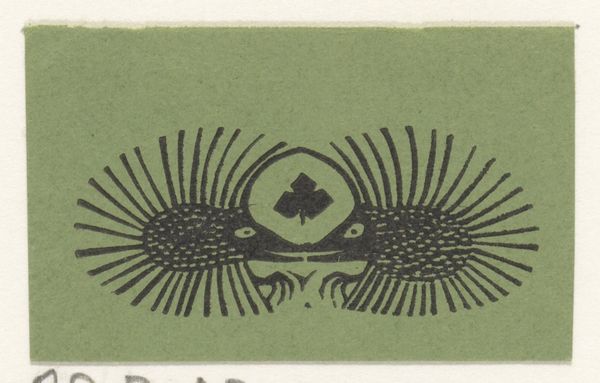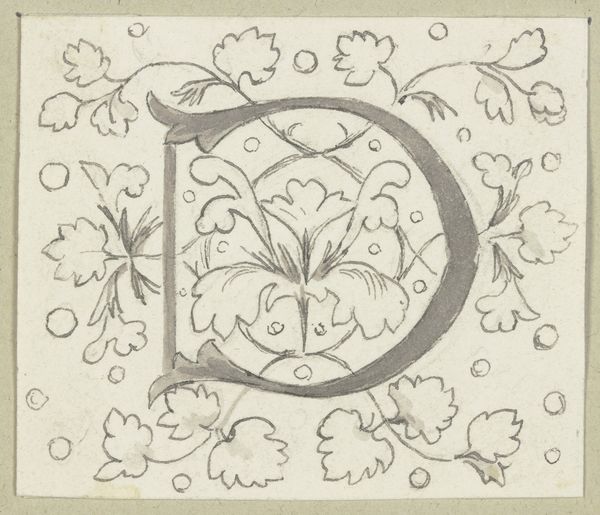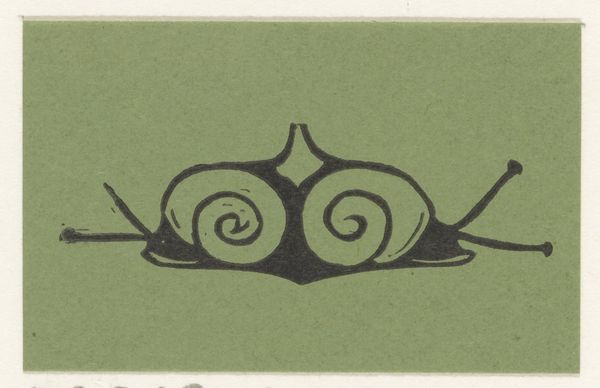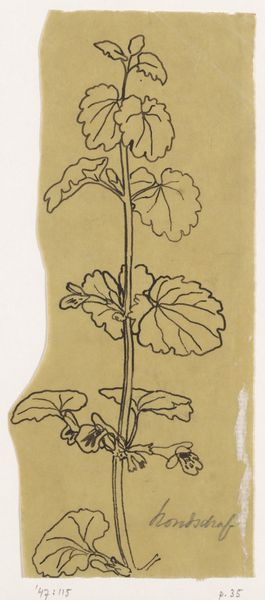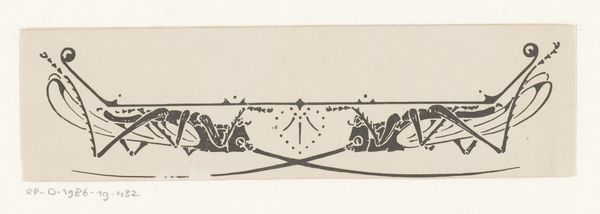
drawing, graphic-art, print, ink
#
drawing
#
graphic-art
#
art-nouveau
#
blue ink drawing
# print
#
old engraving style
#
flower
#
personal sketchbook
#
ink
#
sketchbook drawing
#
decorative-art
Dimensions: height 35 mm, width 63 mm
Copyright: Rijks Museum: Open Domain
Curator: Welcome. We’re looking at Gerrit Willem Dijsselhof’s "Vignet met drie bloemen," a captivating ink drawing from 1892. Editor: It’s striking, this simple composition—almost like a stylized crest. The flat, muted green background throws the stark black floral design into sharp relief. Curator: Dijsselhof was deeply involved in the Dutch Art Nouveau movement. What we see here epitomizes that style with its emphasis on nature, flowing lines, and decorative arts. Look at how the three flowers are not presented realistically, but rather abstracted into almost geometric forms. Editor: Exactly. Art Nouveau often drew inspiration from nature but translated it through a lens of industrialization and the rise of mass production. How do we interpret that choice to render flowers, traditionally symbols of growth and natural beauty, in such a rigid manner? Is there a tension implied between nature and industrial progress? Curator: I'd say the rendering emphasizes the graphic quality of the piece. The sharp contrast between the ink and the background, the careful balancing of positive and negative space – it speaks to a sophisticated understanding of design principles, far beyond mere representation. Editor: Perhaps, but one could argue the rigid design imprisons the flowers, robbing them of their vitality, transforming them into mere objects. In this period, you had growing concerns about environmental exploitation and the alienation of labor due to industrial capitalism, particularly amongst artists and designers interested in social reform. The stylized choice could symbolize the repression of nature's inherent dynamism by a rapidly industrializing society. Curator: An interesting thought. While I acknowledge the social context, I am drawn to how this vignette embodies the principles of formal harmony and balance. Consider how the curves of the petals play against the straight lines of the stems. Editor: Context provides depth. Considering this work alongside contemporary debates around nature and progress reframes our reading from a study in design to a social commentary. Curator: A point well taken, although I am more inclined to admire Dijsselhof's artistic decisions as contributing to the creation of visual delight. Editor: And I’m drawn to the message it conveys beyond its initial aesthetics. Curator: Artworks can engage us on so many levels, can't they? Editor: Indeed. They speak across time and challenge us to refine how we read the visual and contextual landscape.
Comments
No comments
Be the first to comment and join the conversation on the ultimate creative platform.
